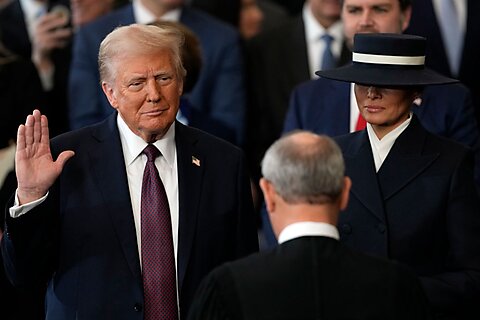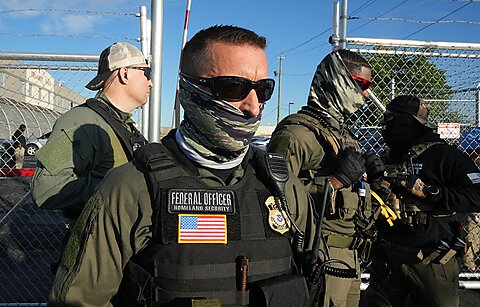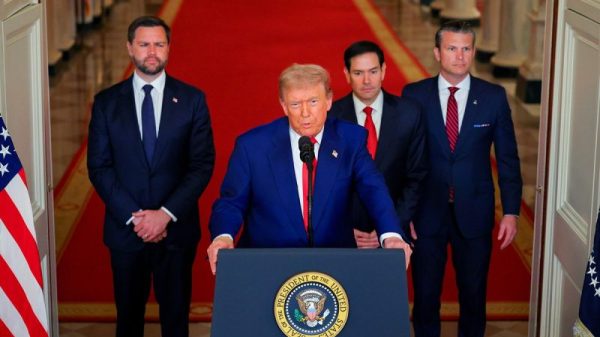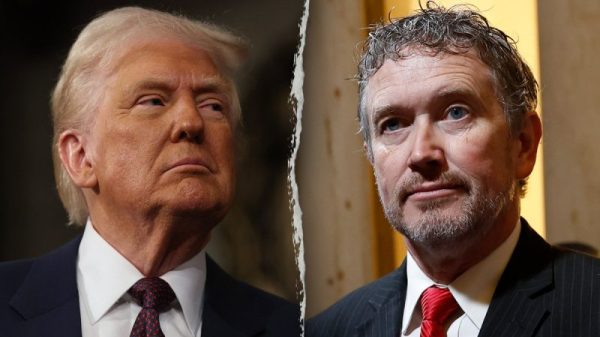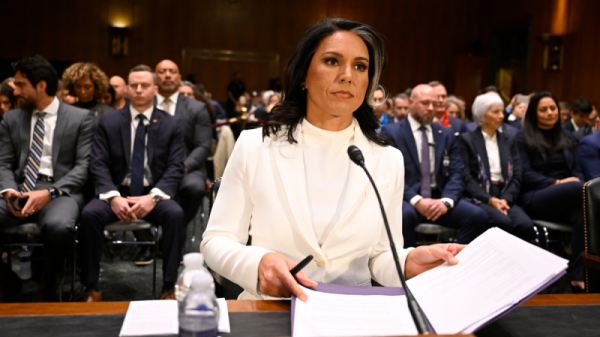At the start of this week, if you were “monitoring the situation” via President Trump’s Truth Social feed, you might have assumed the United States was already at war with Iran. On Monday (June 16), Trump demanded the immediate evacuation of Tehran; on Tuesday, he was calling for Iran’s “UNCONDITIONAL SURRENDER” and using the first-person plural to describe Israel’s war efforts: “We now have complete and total control of the skies over Iran” and “We are not going to take him [i.e., Ayatollah Khameni] out (kill!), at least not for now.”
As things stand now, the president—possibly ticked off by a Wall Street Journal editorial?—has issued the Islamic Republic a temporary reprieve. “I may do it, I may not do it,” he told the press on Wednesday: “I mean, nobody knows what I’m going to do.” Okay, then—do keep us posted.
All along, Trump and his administration have continued to insist that “he is the singular guiding hand for what will be occurring from this point forward.” Vice President J.D. Vance says the decision to go to war “ultimately belongs to the president.” In that sense, the Bush/Trump face morph making the rounds is arguably unfair—to George W. Bush. The 43rd president made similar claims about unilateral power, but he ultimately got congressional authorization for his disastrous war of choice.
Rep. Thomas Massie (R‑KY) has a different view on who gets to decide:
“Congress has the sole power to declare war against Iran. The ongoing war between Israel and Iran is not our war. Even if it were, Congress must decide such matters according to our Constitution.”
Who’s right? Massie, obviously. Indeed, the whole point of lodging the bulk of the war powers with Congress was to ensure that “this system will not hurry us into war,” as Pennsylvania’s James Wilson explained in 1787, “it is calculated to guard against it. It will not be in the power of a single man… to involve us in such distress, for the important power of declaring war is vested in the legislature at large.”
Absent congressional authorization, the president’s constitutional war powers are strictly defensive: the power to “repel sudden attacks,” per Madison’s notes from the Convention—not the power to launch them. There was broad consensus on that point among the Framers: “Every major figure from the founding era who commented on the matter said that the Constitution gave Congress the exclusive power to commit the nation to hostilities”; that included “strong advocates of the president’s prerogatives, such as George Washington and Alexander Hamilton.” As Washington put it in 1793,
“The Constitution vests the power of declaring war with Congress; therefore no offensive expedition of importance can be undertaken until after they shall have deliberated upon the subject, and authorized such a measure.”
That’s how it was supposed to work—but it hasn’t worked that way for quite some time. What’s constitutional and what the president can get away with are two separate matters, unfortunately. If tomorrow, another lippy reporter needles the president about his “TACO” rep (viz. “Trump Always Chickens Out”), and the president decides it’s bunker-buster time, the military will obey his orders, and we’ll have to deal with the consequences.
Is there anything Congress can do to restrain the president? The few remaining institutionalists in the First Branch are determined to try. In the House, Rep. Massie, with Rep. Ro Khanna (D‑CA) introduced a “Bipartisan War Powers Resolution” under §5(c) of the 1973 War Powers Act; in the Senate, Tim Kaine (D‑VA) has put forward his resolution to halt further escalation. The operative clauses of each bill, in identical language, direct the president
“to terminate the use of United States Armed Forces from hostilities against the Islamic Republic of Iran or any part of its government or military, unless explicitly authorized by a declaration of war or specific authorization for use of military force against Iran.”
I wish I could be more confident that these moves will succeed, but they’ve got a high bar to clear. In February 2020, after President Trump’s drone strike assassination of Iranian General Qassem Soleimani, Senator Kaine took the lead on a similar measure directing the president to terminate the use of US forces for hostilities against Iran. It passed 55–45 with eight GOP votes, but couldn’t make it past Trump’s veto.
The original 1973 War Powers Resolution relied in part on a “legislative veto” mechanism to restrain the president: under §5(c): when US forces are engaged in hostilities without congressional authorization, they “shall be removed by the President if the Congress so directs by concurrent resolution.” The Supreme Court’s 1983 decision in INS v. Chadha effectively neutered that congressional check, with the result that a president bent on war can now do as he pleases unless and until Congress can assemble a veto-proof supermajority to stop him.
With enough support, the efforts by Kaine, Massie, et al. could prove valuable, nonetheless, as a signal to the president of how far out on a limb he’s going if he enters this war unilaterally. But ultimately, taking a bite out of presidential warmaking requires a framework statute that, unlike the ‘73 War Powers Resolution, actually has teeth. The National Security Powers Act put forward by Senators Mike Lee (R‑UT), Bernie Sanders (I‑VT), and Chris Murphy (D‑CT) in 2021 took the right approach: linking enforcement to Congress’s power of the purse and automatically killing funding for warmaking.
Until then, contrary to the Framers’ design, the choice of war or peace is “in the power of a single man”—and a flighty, easily baitable, and rage-prone one at that. Ordinarily, I don’t put a lot of stock in what uberhawk John Bolton, Trump’s former National Security Adviser, has to say, but I figure he’s reliable on this point at least:
in his experience, Mr. Bolton said, Mr. Trump was “frantic and agitated” in national security crises. “He talks to a lot of people and he’s looking for somebody who will say the magic words…. He’ll hear something and he’ll decide, ‘That’s right, that’s what I believe.’ Which lasts until he has the next conversation.”
“The Room Where It Happens” is ultimately inside Trump’s head. So for now, we’re left doing #MAGA Kremlinology by following the White House visitor logs and the president’s social media feeds and hoping whoever talked to him last had prudence and good sense.

